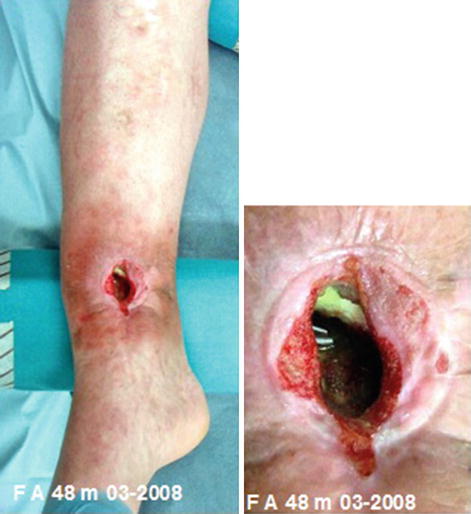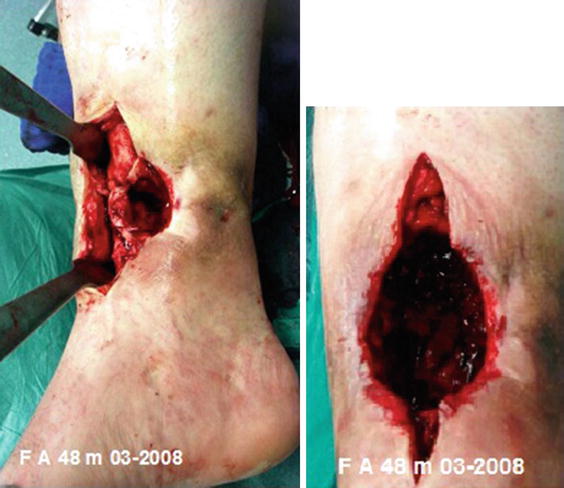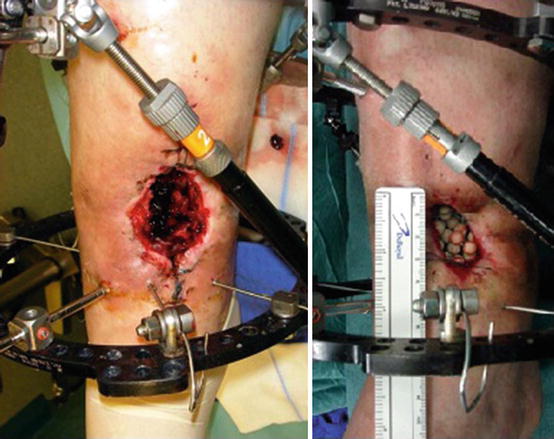Fig. 1
Distal tibial septic nonunion with screw fixation between the fibula and tibia proximally and distally of the nonunion site

Fig. 2
Clinical appearance of the soft tissue and bone defect
3 Preoperative Problem List
1.
Septic pseudarthrosis of the tibia
2.
Soft tissue and bone defect
4 Treatment Strategy
Initial surgery:
1.
Screw removal.
2.
VAC system after debridement of the soft tissue. The sclerotic dead bone was positioned on the distal tibia.
3.
A bifocal ring fixator was mounted. Hereby gradual shortening was performed distally at the nonunion site and distraction at the proximal tibial osteotomy.
4.
Antibiotic beads were placed into the bone defect distally to decrease the dead space.
Further surgery:
5.
Soft tissue was covered temporarily with synthetic skin (Epigard®).
6.
Secondary plating after osteodistraction at the metaphyseal area was performed because of the delayed maturation of the callus with additional bone grafting and bone biologics (BMP).
5 Basic Principles
1.
Distraction osteogenesis utilizing external ring fixation is an excellent option for limb lengthening and deformity correction. It is also feasible in cases of septic pseudarthrosis. The hematoma at the osteotomy gap has osteogenetic potency for new bone formation. By distracting two osteotomized fragments (called callus distraction) or by shifting a bony fragment ( segment transport ), callus formation is induced. Segment transport is performed over an external ring fixator by daily transporting the bony segment into the bone defect.
2.
During distraction osteogenesis, prolonged external fixation can lead to pin site infection, hardware failure, and patient’s dissatisfaction. Furthermore fractures and bending of the new bone after frame removal may occur. Therefore, in some cases several hybrid techniques are useful to avoid these complications. Approaches in these hybrid techniques are nailing after lengthening, lengthening over nail, or plating after lengthening . The indication for secondary internal fixation can be determined either before or during the distraction phase.
3.
A common technique in bone graft harvesting is the reamer-irrigator-aspirator system ( RIA , DePuy Synthes®). Initially this technique was developed to prevent intramedullary pressure rise resulting in fat embolization during reaming. It has been described as a sufficient and safe procedure of significant amount of bone harvest especially in the treatment of long bone nonunions. Hereby the reaming debris is rich in growth factors.
6 Images During Treatment
See Figs. 3, 4, 5, 6, 7, and 8.


Fig. 3
Soft tissue and bone debridement of the nonunion site










